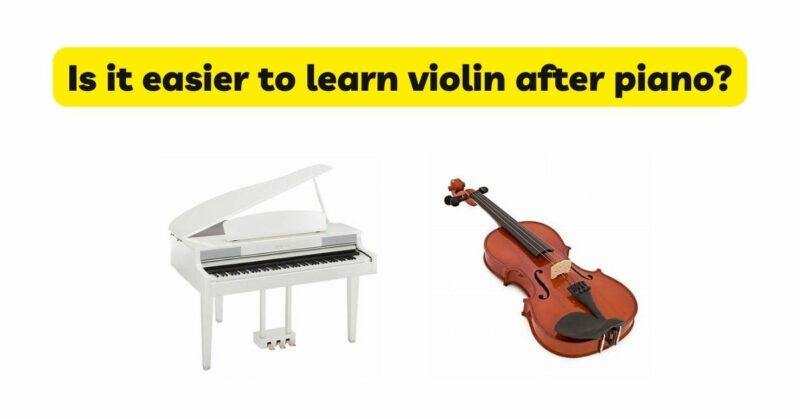For musicians who have already mastered the piano, the idea of learning a new instrument such as the violin can be both exciting and daunting. Many individuals wonder if their prior piano experience will make it easier to learn the violin. In this article, we will delve into the transition from piano to violin, examining the benefits, challenges, and considerations that come with this progression. By exploring the similarities, differences, and transferable skills between the two instruments, we aim to provide insights into whether learning the violin after the piano is indeed easier.
- Transferable Skills: Transitioning from piano to violin offers certain advantages due to the transferable skills gained from playing the piano. One of the key skills is the ability to read sheet music. Piano players are already familiar with reading notes, rhythms, and musical notation, which can significantly ease the learning process when starting the violin. The knowledge of music theory acquired through piano study also carries over, facilitating the understanding of scales, chords, and musical structures.
- Musicality and Expressiveness: Playing the piano develops a sense of musicality, dynamics, and phrasing. These skills can be transferred to the violin, as both instruments require an understanding of expression, shaping musical phrases, and controlling dynamics. Piano players often have a strong sense of timing, which can be beneficial when learning to play the violin with accuracy and precision. The ability to interpret and convey emotions through music, honed during piano practice, can also enhance the expressiveness on the violin.
- Finger Dexterity and Hand Coordination: The dexterity and hand coordination acquired from playing the piano can be advantageous when learning the violin. Piano players are accustomed to moving their fingers independently and coordinating the movement of both hands. This finger independence translates well to the violin, where precise finger placement is crucial for accurate intonation. Furthermore, the hand-eye coordination developed on the piano can help in bowing technique and positioning on the violin.
- Ear Training and Intonation: Piano players often have a well-trained ear due to their exposure to different pitches, intervals, and harmonies. This ear training can be valuable when learning to play the violin, where intonation is critical. The ability to discern and reproduce accurate pitches allows piano players to more easily adjust to the nuances of violin intonation and improve their playing accuracy.
- Challenges and Differences: Despite the advantages gained from piano experience, it is important to acknowledge that learning the violin after the piano also presents unique challenges. The physical aspects of playing the violin, such as holding the instrument correctly, positioning the bow, and developing proper bowing technique, require dedicated practice and adjustment. Additionally, the violin requires a heightened sense of body awareness, as the player must learn to navigate the fingerboard and control the bow with precision. Adjusting to the smaller size of the instrument and the different posture and hand positions can initially feel unfamiliar to piano players.
- Learning Resources and Guidance: Access to quality learning resources and guidance is crucial when transitioning from piano to violin. While piano players may have a solid foundation in music theory and reading sheet music, seeking the guidance of a qualified violin teacher is highly recommended. A skilled instructor can help piano players adapt their existing knowledge and technique to the unique requirements of the violin. Utilizing method books, online resources, and attending violin workshops or classes can further enhance the learning experience and aid in the transition.
- Persistence and Dedication: As with any new instrument, transitioning from piano to violin requires persistence, dedication, and consistent practice. While prior piano experience can provide a head start in certain areas, it is essential to approach the violin with humility and a beginner’s mindset. Embracing the challenges, developing a solid practice routine, and seeking opportunities for growth will contribute to a successful transition.
Conclusion: Transitioning from the piano to the violin can indeed offer advantages for musicians seeking to expand their skills and repertoire. The transferable skills, including music reading, theory, finger dexterity, hand coordination, and expressiveness, acquired through piano study can provide a solid foundation for learning the violin. However, it is important to recognize that the violin has its unique challenges, such as physicality, bowing technique, and intonation. The success of the transition depends on one’s commitment, persistence, and willingness to adapt to the specific demands of the violin. Seeking guidance from a qualified violin teacher and utilizing available learning resources will greatly facilitate the learning process. Ultimately, with passion, dedication, and an open mind, piano players can embark on an enriching journey of discovering the unique beauty and expressive capabilities of the violin.


